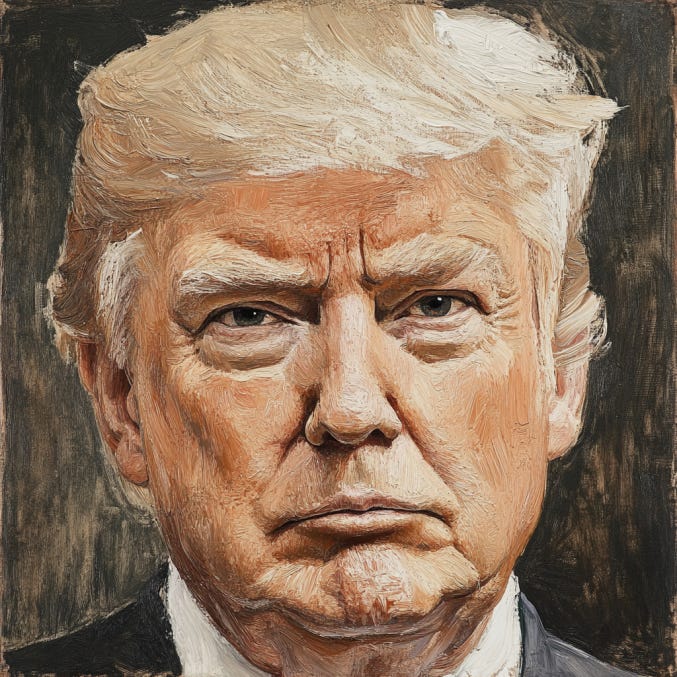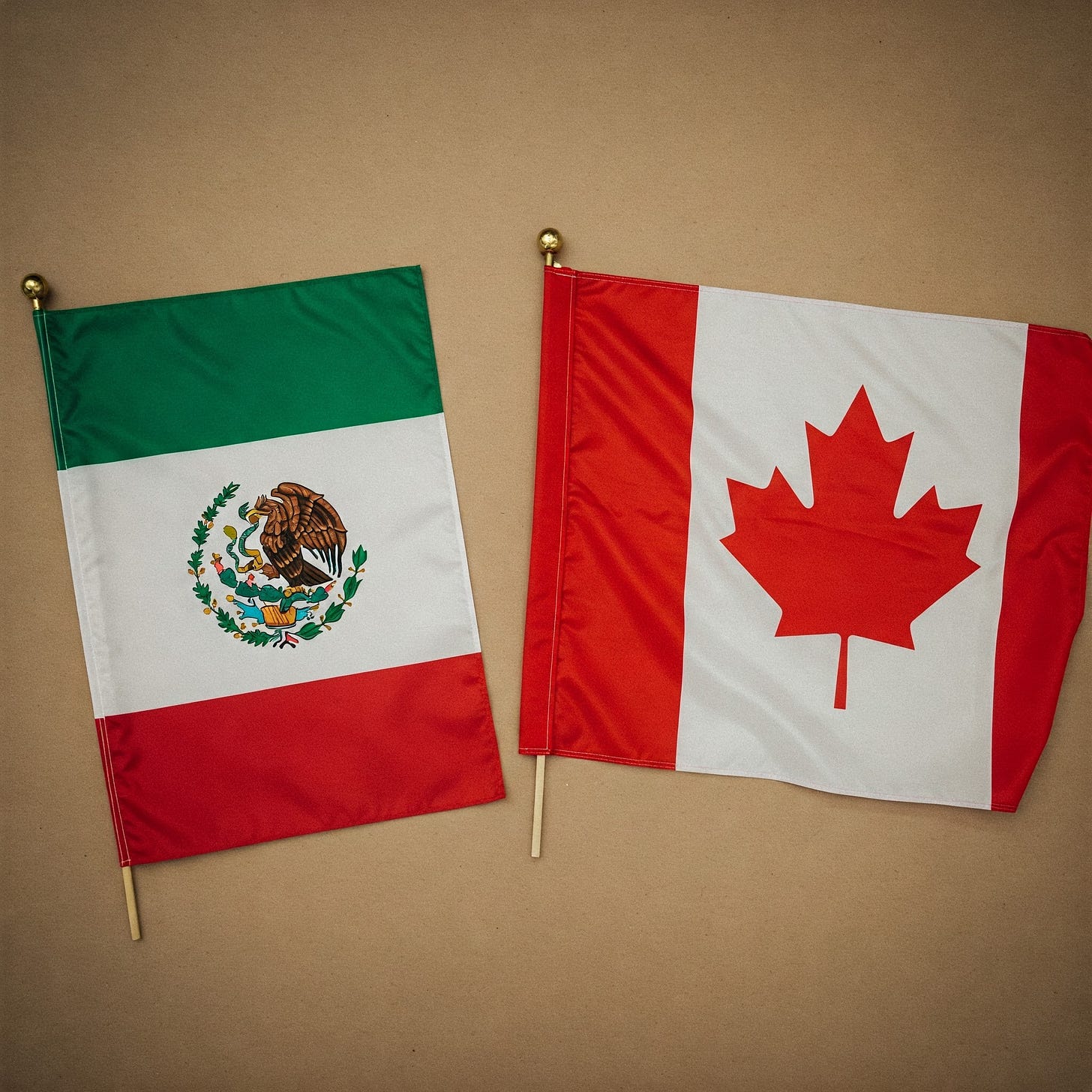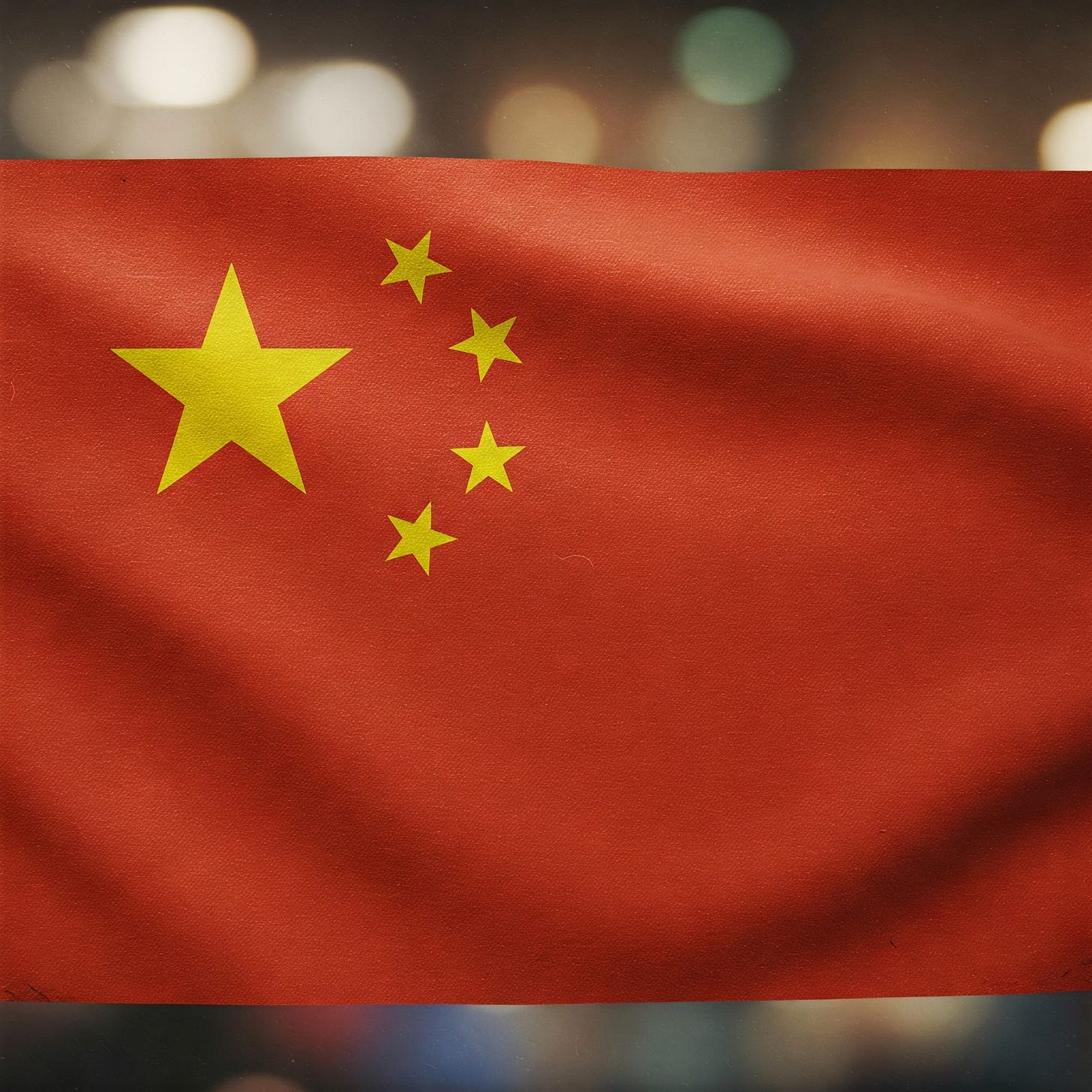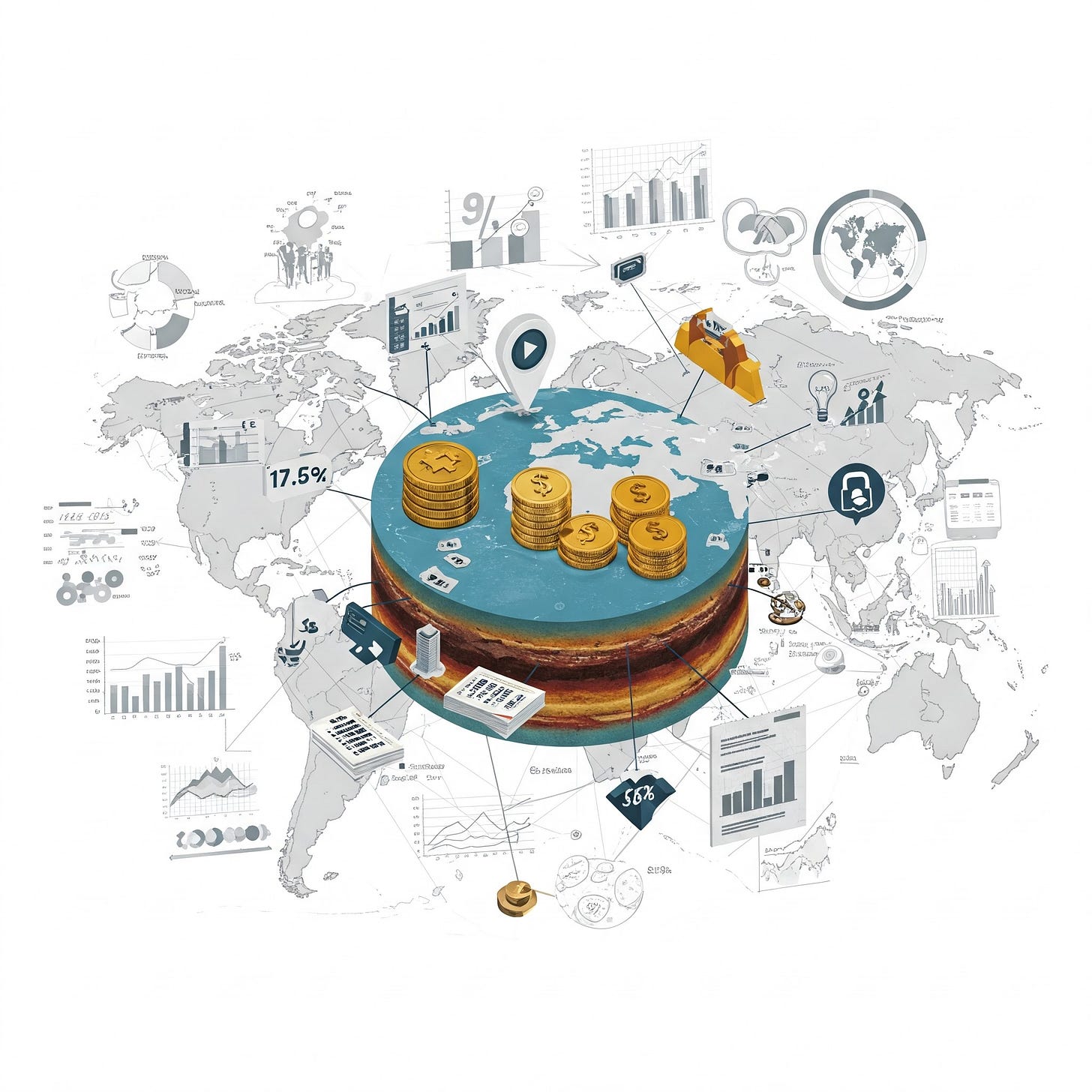Trump's 2025 Tariffs: America First vs. Mexico, Canada, China, Europe (EU): Analysis of the Logic & Potential Effects
Trump & Bessent plan to impose targeted tariffs on Mexico, Canada, China, and the EU...
In early 2025, Donald Trump proposed a new round of tariffs aimed at several key U.S. trading partners, including China, Canada, Mexico, and the European Union.
These tariffs range from 10% on Chinese goods to as high as 25% on imports from neighboring countries. Initially he’s likely using the threat of tariffs to see if any countries will capitulate on a better deal pre-implementation.
While critics warn of higher consumer prices and retaliation against U.S. exports, Trump’s supporters argue that these tariffs could lead to better trade deals and strengthen domestic manufacturing in the long run.
We do know that Trump’s 2018 tariffs defied economists doomsday predictions… will these new tariffs follow suit?
READ: Trump’s 2018 Tariffs vs. Economists’ Doomsday Predictions
Basic Rationale for Trump’s 2025 Tariffs
Protecting American Industries: Tariffs are seen by Trump as a tool to shield U.S. producers from cheaper imports, especially in sectors like automobiles, steel, and agriculture. (Related: U.S. Steel x Nippon 2025 Deal Blocked by U.S. Gov).
Reducing Trade Deficits: Trump has consistently called large trade imbalances a sign that the U.S. is being “ripped off.” By imposing tariffs, he aims to narrow the deficit by discouraging imports and incentivizing domestic production.
Addressing Security & Immigration Concerns: Trump argues that Canada and Mexico must do more to stop illegal immigration and drug trafficking. By tying tariffs to these security demands, he hopes to pressure neighboring governments to take stronger action.
Negotiating Leverage: By raising tariff threats, the Trump administration aims to force trade partners—such as China or the EU—to come to the table and grant concessions on market access, intellectual property (IP) protections, or enforcement against narcotics.
Will Trump’s 2025 Tariffs Effectively Make the U.S. Stronger?
Possibly. I’m not sure what Trump’s precise goals are with tariffs in 2025. I know Trump is “America First” maxxing… 100% U.S.
This is a good thing for Americans and a bad thing for other countries exploiting the U.S. (even though the tariffs may end up inflationary and/or suboptimal over the short-term).
Trump’s aim is to keep the economy growing as rapidly as possible with strategic tariffs and he wants his Treasury pick (Scott Bessent) to make magic happen… Bessent is considering phasic implementation (scaling by ~2% to ~5% per month).
1. Mexico & Canada: 25% Tariff on All Imports
Logic for MX/CA Tariffs
Pressure on Border Security & Immigration: Trump has frequently argued that Mexico is not doing enough to stop the flow of migrants and drugs (especially fentanyl) heading north. By imposing heavy tariffs, he aims to compel the Mexican government to tighten border enforcement and crack down on cartels.
Rebalancing “Unfair” Trade: Trump has long viewed NAFTA (and even USMCA) as insufficient in protecting U.S. economic interests. A high tariff rate signals a desire to renegotiate terms or force concessions that favor American industries, especially in auto manufacturing and agriculture.
Domestic Political Leverage: Imposing tariffs on close neighbors resonates with parts of Trump’s political base that blame job losses on North American manufacturing shifts. The 25% figure is high enough to demonstrate “toughness” on trade and immigration issues.
Short-Term Effects
Immediate Price Hikes: American buyers will see prices go up quickly on cars, auto parts, agricultural goods (like vegetables, avocados, beer, and liquor from Mexico), and energy (especially from Canadian oil).
Supply Chain Disruption: Many U.S. factories (especially in the auto sector) rely on just-in-time parts coming from Mexico or Canada. With a 25% tariff, production costs jump, either causing immediate factory slowdowns or forcing companies to raise final sticker prices on cars.
Long-Term Effects
Automotive Relocation or Restructuring: Some manufacturers might relocate supply chains back into the U.S. or shift to cheaper countries (like in Southeast Asia) if the tariffs last. Mexico and Canada could lose part of their auto manufacturing edge as companies look elsewhere.
Political Tensions: Mexico and Canada might respond with counter-tariffs on U.S. products (e.g., American whiskey, dairy, produce) to squeeze key political constituencies. This can escalate into a tit-for-tat trade war unless new deals are reached.
Pressure for Concessions: The tariffs could force Mexico and Canada to tighten border security on drugs or migration if they want them lifted. Whether that actually happens—and how strictly it’s enforced—is another question.
Will They Agree to “Fairer” Trade Terms?
Mexico: Might be more willing to negotiate on issues like migrant transit or drug interdiction because its economy relies heavily on exports to the U.S. However, domestic politics in Mexico might make it tough for their government to publicly cave to American pressure.
Canada: Could attempt a trade negotiation. Canada does need the U.S. market, but historically it fights back with its own tariffs, especially on agriculture and consumer goods. Expect a Canadian backlash before any capitulation.
2. China: 10% Tariff on All Imports
Logic for China Tariffs
Trade Imbalances & IP Theft: Trump points to the large U.S.-China trade deficit as a sign that China is exploiting the U.S. market. He also blames China for intellectual property theft, forced technology transfer, and other “unfair practices.” A new 10% tariff (on top of existing tariffs from his first term) is meant to pressure Beijing to address these issues and negotiate what he sees as a “fairer” trade deal.
Fentanyl Crisis: Trump specifically cites China as a major source of fentanyl or its chemical precursors, which fuel the opioid epidemic in the U.S. The tariff hike is intended to push Beijing to crack down on illicit fentanyl shipments.
Strategic Decoupling: Beyond just negotiating leverage, Trump’s broader goal is to reduce U.S. reliance on China-centric supply chains, thereby encouraging U.S. or third-country manufacturing.
Short-Term Effects
Consumer Electronics and Retail Price Increases: Much of what Americans buy at Walmart, Target, and on Amazon is made in China—phones, TVs, clothing, kitchenware. A 10% tariff adds up quickly on top of existing tariffs.
Revenue Boost for the U.S. Treasury: Every single container coming from China would effectively get taxed an extra 10%. That funnels more money into the government’s coffers in the immediate term.
Long-Term Effects
Supply Chain Shifts: U.S. companies might move production from China to Vietnam, India, or other countries. This can be a slow process but reduces reliance on China over time.
Retaliation or Negotiation: China might slap counter-tariffs on U.S. goods—agriculture (soybeans, meat), aircraft, tech. Or Beijing might come to the table to negotiate limited concessions (like intellectual property protections or reduced fentanyl precursors) if it sees an economic or strategic advantage.
Will China Agree to “Fairer” Terms?
Limited Concessions: China has a track record of making promises and implementing minimal changes. If they see Trump’s tariffs as real leverage, they might give up some IP protections on paper or crack down more seriously on fentanyl exports. Long-term structural changes, however, are tougher to secure.
3. Potential Tariffs on the European Union
Logic for EU Tariffs
Reducing the U.S.-EU Trade Deficit: Trump has repeatedly criticized the EU for maintaining barriers to U.S. goods—particularly agricultural products and certain industrial sectors. Tariffs are his means of forcing market-access concessions.
Targeting Key EU Exports (Automobiles & Luxury Goods): By threatening tariffs on high-profile items like German cars and French wines, Trump aims to create pressure on major EU economies (Germany, France) to come to the negotiating table quickly.
Leveraging Energy & Defense: Trump has also tied trade issues to broader geopolitical concerns, urging the EU to buy more U.S. energy (LNG, oil) and invest more in defense within NATO. Tariffs potentially serve as a stick to push EU countries in these areas.
Short-Term Effects
Luxury and Specialty Goods Get Pricier: European cars (BMW, Mercedes, VW), wines, cheeses, and other imports could see a jump in retail price if Trump targets them. This hits American consumers who buy those premium products.
Retaliation from Brussels: The EU isn’t shy about hitting back. Counter-tariffs often target iconic American exports like bourbon, Harley-Davidsons, or agricultural products from politically important states.
Long-Term Effects
Manufacturing Shifts: EU companies might scale back certain exports to the U.S. or set up more production stateside if the tariffs linger. This can be good for American jobs but only if enough plants actually relocate.
Further Strain on Transatlantic Relations: U.S.-EU disputes over trade are nothing new, but higher tariffs could deepen mistrust, affecting NATO or other strategic cooperation.
Will the EU Come to the Table?
Maybe: Europe typically tries to maintain a unified front and often drags out negotiations. They might compromise on specific items—like letting in more U.S. agricultural goods—but it won’t be quick or painless.
Net Effects & “Fairer” Trade Outcomes
Short-Term for the U.S.
Higher consumer prices almost across the board, but immediate windfall in tariff revenue.
Potential job boosts in certain industries if companies bring manufacturing home—though that doesn’t happen overnight.
Long-Term for the U.S.
Some manufacturing may indeed return or move to friendlier (or cheaper) countries.
Potential strain on the global trade system; the U.S. might face retaliation and a slowdown in exports.
If the U.S. leverages tariffs effectively, it could force real concessions—especially on border security, drug enforcement, and trade rules—though success is not guaranteed.
For Mexico, Canada, China, EU
They risk losing market share in the U.S. if the tariffs remain high or if American companies shift supply chains.
Each bloc will weigh the cost of retaliating or negotiating. Retaliation hurts their own consumers and exporters, but so does capitulation. Expect a mix of both.
Will They Sign ‘Fairer’ Deals?
Mexico and Canada: Possibly more room for deals—both countries rely heavily on the U.S. market.
China: Might sign some symbolic agreements or partial concessions but is less likely to engage in a sweeping overhaul.
EU: Negotiations will be slow and messy, with limited major concessions at first.
What’s Most Likely to Happen with the 2025 Trump Tariffs & When? (Possible Outcomes)
Mexico & Canada (25% Tariffs)
Odds (60%) that the U.S. implements these tariffs as scheduled on February 1, 2025.
Negotiated Easing by Mid-2025 (50% chance): Under pressure from key industries, all parties might reach a partial deal that reduces the tariff rate in exchange for tougher enforcement against drug trafficking and improved border security measures.
China (10% Tariffs)
Implementation Almost Certain (80% chance): Tariffs will likely take effect February 1, 2025, adding to existing duties.
Potential Concessions by Q3 2025 (40% chance): If China offers limited moves on IP protection or fentanyl precursor controls, the U.S. might freeze or slightly reduce tariffs.
European Union (10–20% Tariffs)
Tariffs Imposed by Summer 2025 (50% chance): The administration may delay or stagger EU tariffs, depending on negotiations over agriculture and automotive imports.
Long Negotiations (Likely into 2026): The EU’s preference for a unified response makes a quick agreement less likely, with each side possibly settling for smaller, item-specific deals over time.
Overall Effects…
Short-Term Help: The U.S. government might collect more tariff revenue, and American companies could see a jolt in “Buy American” sentiment if imports become pricier. But consumers will bear higher costs almost immediately, so the net short-term effect could be politically dicey.
Long-Term Help: If Trump forces real policy changes—like reduced illegal fentanyl flows, intellectual property safeguards, or new bilateral deals that open foreign markets to more U.S. goods—some economists would argue it’s worth the temporary pain.
Risks: Retaliation, reduced export markets for U.S. farmers and manufacturers, and diplomatic strain. Companies often pass on the higher costs to consumers, and a serious trade war can dent economic growth.
What if Trump really turned up the heat (max trade pressure) for 2025-2029?
He’s probably not going to do this. I doubt Trump will really apply max pressure… but he could. Many Americans would be motivated to crush the competition and would step up.
All in on AGI and robots etc. with a big middle finger to socialism and some short-term pain. Many other Americans would resist and whine about the S&P500 going down in short-term or something… would need to walk a tight rope in order to secure votes for the next presidential election (2028).
Why he probably won’t do this… Trump wants an elite economy and credit for it. He checks the markets daily. Other countries can just be patient and take on pain until he renegotiates a slightly fairer deal for the U.S. and claims it’s a huge improvement (even if it’s more of a modest improvement) - I think this is what’s most likely to happen.
Harsh Tariffs + Reduced Military Support = Real Leverage
For allies like the EU (NATO) and Canada, the U.S. wields a massive stick: the threat of withdrawing troops or security guarantees, plus hammering exports with tariffs. They rely more on American protection and market access than they usually admit.
In a Prolonged Standoff, the U.S. Is Harder to Push Around
The U.S. economy remains the largest single consumer market; cutting off easy access is a nightmare for export-driven countries.
The U.S. also spends more on defense than the next several countries combined—so if it scales back, allies scramble to fill the gap.
Expect Concessions—But Probably Partial
Allies and rivals alike (China, EU, Canada, etc.) would likely make deals to stave off deeper economic or security fallout. They won’t love it, but pressure works when the U.S. is the biggest buyer, the biggest defense provider, and has money to spend.
Still, each will push back and adopt retaliatory measures. Ultimately, you get negotiated settlements rather than total surrender.
Global System Shock
If Trump truly goes all-in with multi-front tariffs and defense funding threats, it causes a global economic and diplomatic uproar. Markets will be volatile, corporate supply chains scrambled, and alliances tested.
But from a purely “America First” standpoint, if the U.S. stands firm, it can wring out better trade terms, higher defense spending from allies, and somewhat less cost-shifting on R&D—assuming it’s willing to tolerate higher prices at home and friction abroad.
Would other countries (EU, CA, UK, MX) capitulate to fairer trade with the U.S. (instead of ripping the U.S. off)?
Mostly, yes, in some measure, because the U.S. is too big to ignore, and losing American security or market access is too costly.
It won’t be a neat, total capitulation, but maximum pressure does get results—especially against countries that need the U.S. market and U.S. military umbrella.
China is the lone exception here.
So are Trump’s 2025 tariffs really that bad?
Nobody knows right now… and anyone claiming to know is being dishonest (you should also check their prior predictions for accuracy). We don’t have the full details of each specific set of tariffs - and we don’t know if deals will be negotiated pre-implementation (to avoid them).
In theory the tariffs will cause inflation and economic pain, but this pain cuts both ways and tends to inflict far more damage on countries outside of the U.S. - all the U.S. is asking for is even contribution (most are getting the upper hand on the U.S. because the U.S. is richer and willing to get ripped off to keep things running smoothly).
If Trump works out a significantly fairer trade deal within a reasonable amount of time (such that the U.S. is no longer getting ripped off - or even ripped off to the same extent as right now), this could be a big win.
If the tariffs drag on for a long time and the economy takes a beating and we never renegotiate a deal that is significantly fairer, they’ll be viewed as a bad move… but this could still eventually get transformed into a win if domestic industry booms again in the U.S. (robotics, AGI, nuclear, etc.).







